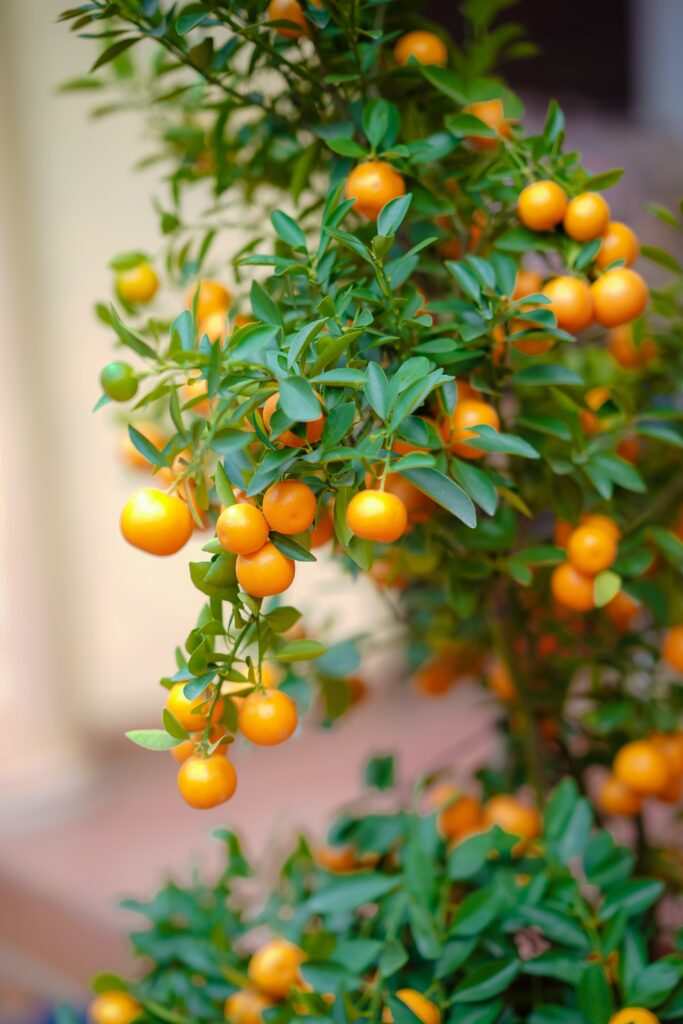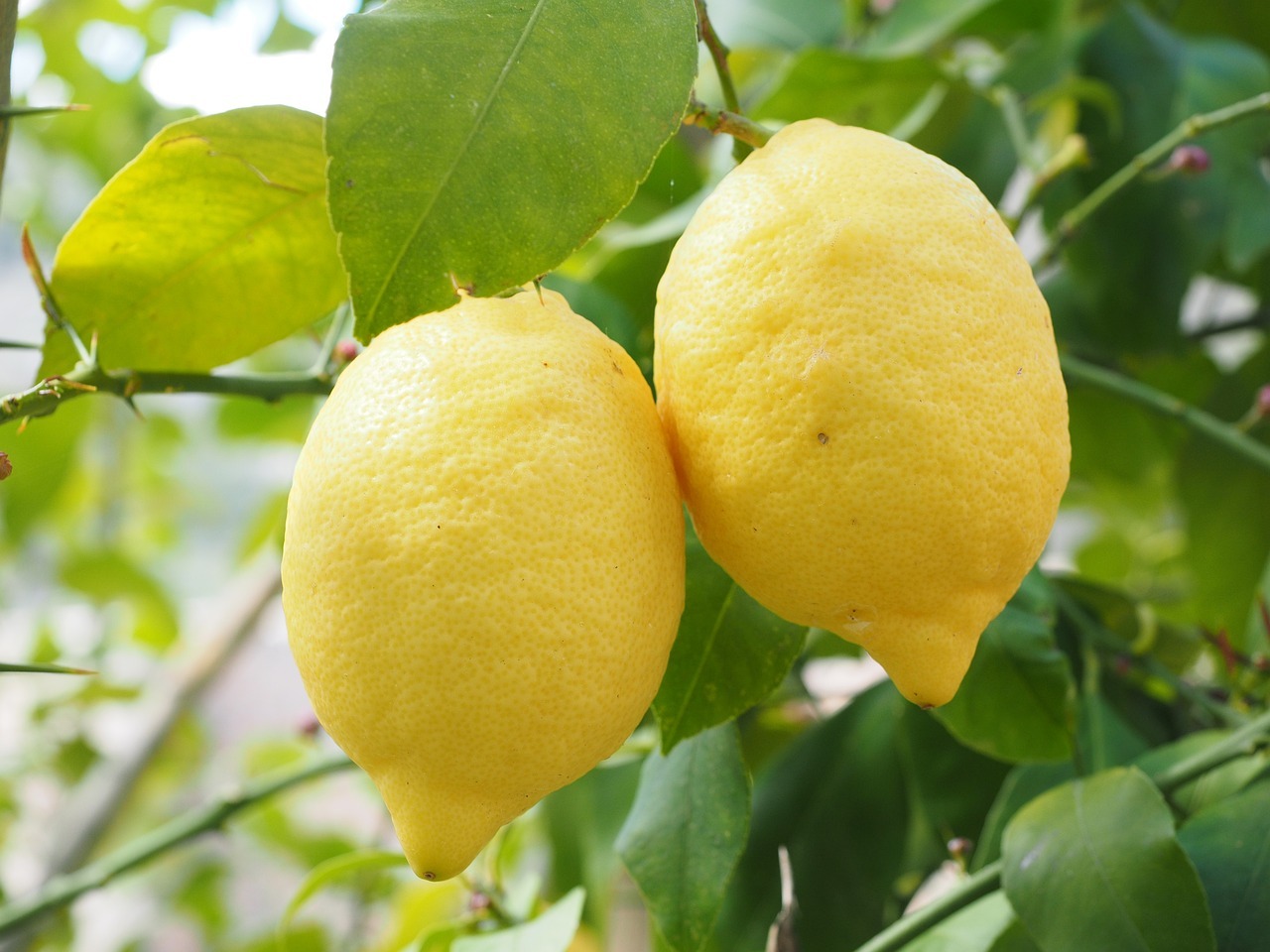
Picture it: you wake on a lovely fall day, walk onto your patio and pick a Satsuma mandarin from your very own tree. You peel back back the rind and bite into a perfectly ripe, tart yet sweet, orange.
This could be you–with a little time, a little knowledge and a citrus tree of your own. The good news? You can find the knowledge and the trees at the upcoming Fall Plant Sale. The time you’ll need to provide yourself.
“It’s not hard to grow citrus trees in the Fort Worth area,” says Director of Horticulture Rob Bauereisen. “And enjoying fruit you grew yourself makes the effort well worth it.”
Bauereisen has been growing citrus trees since the late 1980s and has grown more than one hundred varieties of trees. Every year he orders the best of the best for the Garden’s plant sales and advises buyers on how to succeed with citrus.
Protect Your Trees by Making Them Portable
The first thing to know about citrus trees is that they are sub-tropical plants that cannot tolerate extreme cold. “They have to be grown in containers,” says Bauereisen.
When the weather drops below freezing–and especially when severe cold below 20 degrees hits–citrus trees need to be moved inside. You don’t need a fancy greenhouse–Bauereisen makes do with his garage. You can wrap your trees and leave them outside if the cold isn’t too extreme or expected to linger, but only use a cloth wrapping. Plastic wrapping can seriously damage foliage by wicking the cold to the leaves.
Keep in mind the need to move your tree before selecting a container, and avoid pots that are too big or too heavy. Another reason to select a smaller container over a larger one is that the trees do best when their roots are slightly compacted.
“We sell our citrus trees in one-gallon and three-gallon containers, and I recommend keeping the plant in the same size pot for at least the first year. You will only need to repot if you can lift the plant out of the pot and see only roots–no soil,” says Bauereisen.
Another sign that your plant needs repotting is if when you water, the water immediately drains out of the pot. This is a sign that little to no soil remains to hold the water.
Finally, pots must have drainage holes. “Citrus trees don’t like leaving their feet wet,” he says.
Citrus Basics
Ensuring good drainage is essential for the health of citrus. As well as using a container with drainage holes, Bauereisen recommends using a high quality loose potting soil. Soil from your own garden will compact and provide poor drainage. It might also contain pathogens that would hurt the plant. So stick with potting soil.
Trees need full sun to flower–six to eight hours minimum–but not during the hottest part of the year.
“Full sun in Texas is different than full sun in other places,” says Bauereisen. “As hot as it’s been lately, a citrus tree in full sun all day would burn up. So move the plant into partial shade when it gets into the upper 90s and over 100.”
Trees will also need more water in particularly hot weather. Bauereisen has been watering his trees twice a week this summer. In the winter, he drops back gradually to once a week. “But always check before you water,” says Bauereisen. “Stick your finger an inch or so into the soil. If it is still moist, you can wait.”
For best flower and fruit production, fertilize regularly from spring through August. Bauereisen adds slow release fertilizer pellets to his containers in early spring and then includes a water-soluble fertilizer when he waters. “That way I know the amount of fertilizer is increasing as I water more,” he says.
About this time of year, Bauereisen eliminates the water-soluble fertilizer to help acclimate the tree to colder weather conditions.
Varieties for Every Taste
A wide varieties of citrus grow well in North Texas. Improved Meyer lemon (Citrus × meyeri) and Mexican key lime (Citrus x aurantiifolia) are great citrus trees for beginners since they are easy to grow and begin to produce fruit almost immediately. Other varieties require more patience and might not produce fruit for the first few years.
Some of Bauereisen’s favorites include:
- Valencia (Citrus × sinensis) and Washington (Citrus × sinensis ‘Washington’) navel oranges. “Reliable performers,” says Bauereisen.
- Cara cara oranges. “A pink version of the Washington navel orange.”
- Rio red or ruby grapefruit. “They love our long hot summers,” says Bauereisen.
- Calamondin oranges (Citrus x citrofortunella mitis). “These are small oranges with a sweet rind–you can eat it whole. And it cooks down into a wonderful marmalade.”
- Thornless Mexican key lime (Citrus aurantifolia ‘Mexican Thornless’). “Easier to pick than other varieties of key lime.”
- Several varieties of Satsuma mandarin (Citrus unshiu). “Delicious and easy to peel.”
- Ponderosa lemon (Citrus limon × Citrus medica). “Produces huge, softball size fruits.

Bauereisen also recommends more unusual trees. Buddhah’s hand citron (Citrus medica var. sarcodactylis) produces produces fruits that split into numerous sections that resemble fingers. While edible, the fruit is mostly ornamental and has a potent lemony fragrance.
Variegated pink eureka lemon (Citrus x limon ‘Eureka Pink Variegated‘) is both a stunning specimen tree and a great fruit producer. The leaves of the tree are glossy green with white to yellow to pink variegation. The fruits are also multi-colored in yellow and green, and the flesh inside is pale pink. “It actually makes pink lemonade,” says Bauereisen.
Select Your Citrus at the Fall Plant Sale
Bauereisen has ordered most of these citrus varieties for the Fall Plant Sale, and makes a point of offering wider choices than found at most retail nurseries. However, he can’t guarantee any particular variety will be available this fall, since wholesalers will ship what they have available.
The best way to find out which trees will be available this fall is to plan to attend the Fall Plant Sale Preview on Oct. 4. Guests will be able to tour the sale, view the plants available, ask questions of staff and strategize for the sale. The sale costs $15, but guests will receive a $15 voucher to apply to their plant purchases.
Shoppers should also consider becoming a member so they can shop the Members-Only Preview Sale on Oct. 5. “The members-only sale gets bigger every year,” says Bauereisen. “It’s become the best way to get your pick of the plants.”
As well as getting a first look, members receive $10 off their purchase. (Not yet a member? Sign up today!)
Bauereisen will be at the preview event, the members-only sale and the two days of the public sale, ready to share his passion for citrus and encourage you to bring a lemon, lime, orange or grapefruit tree–or maybe all four!–home soon.







